RetroLisa
---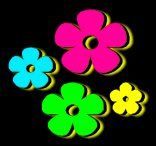 |
1960s Town & Country | |
|
___________________________________________________________________________________________________________
|
|
|
RetroLisa
| _________________________________________________________ | __ | _______________________________________ | _______ | Dining Out
fast food
In the 1960s, very few burger places offered indoor seating. The car was your dining room, the window tray was your table, and the boy behind the counter with the paper hat was your waiter. During this decade, Burger King was one of the first burger chains to add indoor seating.
McDonalds introduced the Filet-o-Fish sandwich in 1963 and the Big Mac in 1968.
Colonel Harland Sanders closed his Kentucky restaurant in 1955 to focus on selling his fried chicken in other restaurants on a franchise basis. By the mid 1960s, this informal collection of franchisees had organized themselves into a formal chain with a unified name, slogan and building design. The Kentucky Fried Chicken chain had arrived.
specialty
- Tastee Freez
- Dairy Queen
- Dunkin' Donuts
- Stuckey's
- Winchell's Donuts
- Krispy Kreme
family restaurants & coffeeshops
Many family vacations were spent on America's new freeways and interstate highways. When it was time to eat, there was always a clean, wholesome family restaurant waiting at the next exit.
The first Big Boy restaurant opened in 1936. The Big Boy chain was born in 1948 when the original concept was licensed to franchisees. From there, the chain quickly grew into an elaborate network of regional subchains. In the 1960s, they included Bob's Big Boy, Shoney's Big Boy, Frisch's Big Boy, Marc's Big Boy and Elias Brothers Big Boy.
In Los Angeles, many coffeeshops sported space-age Googie architecture. On the Sunset Strip, Ben Frank's was a hip hangout for teens after the discotheques closed for the night.
| | 

Vintage Fast Food Collectibles
The Drive-In Restaurant Page

--Car window tray


|
| ____________________________ | ____________________________ | __ | _______________________________________ | _______ | Los Angeles
Chicago
| many cities
| | 
|
| ___________________________________________________________________ | __ | _____________________________ | _______ | casual dining
In the 1960s, self-service cafeterias and smorgasbords were very popular with the family crowd. Also popular were the steakhouses that were popping up in various cities throughout the country. The Bonanza Sirloin Pit steakhouse chain was founded in 1963 by actor Dan Blocker, who named it after his famous TV show.
| | |
| ___________________________________________________________________ | __ | _____________________________ | _______ | fine dining & trendy spots
Upscale dining in the 1960s was all about glamour, impeccable service and perhaps a celebrity encounter or two. The Tiki restaurant trend was in full swing during this decade. | | |
| ______________________ | _______________________________________ | __ | ___________________________________ | _______ | Chicago
Los Angeles
New York City
- The Four Seasons
- Benihana Of Tokyo
- Russian Tea Room
|
many cities
other cities
| | 
|
_________________________________________________
|
|
|
RetroLisa
| ___________________________________________________________________ | __ | _____________________________ | _______ | Buildings & Businesses
googie
Not familiar with Googie? If you remember The Jetsons, then you know Googie!
Googie was a popular decorating style in the 1950s and 1960s. It was named after Googie's, a California coffeeshop famous for its modern, space-age look. The style was also known as Populuxe and Coffeeshop Modern, and could be found in coffeeshops, motels, bowling alleys and cocktail lounges. Many signs also used Googie themes.
Googie Architecture Online
The Mid-Century Art Of Nat Reed
Roadside Peek
The World Of Shag: Retro Artwork
characteristics of Googie design
- amoeba & boomerang shapes
- starbursts
- upswept roofs
- space-age motifs (atoms, sputniks)
- large plate-glass windows
- zig-zag or scalloped roofs
- pastel colors: pink, yellow, orange, turquoise
signs
Neon signs were at the peak of their popularity in the 1950s and 1960s. This would change in the 1970s when many businesses began to favor the plastic lighted box sign.
A popular style for signs in the 1960s was to place each letter in its own colored square. Many motels and shopping centers used this design, as did the original Disneyland logo.
Neon Delights
American Sign Museum

Zig-zag roofs were a common sight on
public buildings in the 1960s
tiki
Several factors were instrumental in popularizing the style known as Tiki. Soldiers who served in the South Pacific during World War II brought the look and feel of the islands home with them. In 1959, Hawaii became our 50th state. After the war, jet travel made tropical vacation destinations more accessible.
As a result, exotic decor became very popular in the 1950s and 1960s. Tiki could usually be found in cocktail lounges, restaurants and hotels. Tropical drinks, sleazy lounge music and Polynesian decor provided the necessary ambiance.
| |


A typical 1960s lobby:
turquoise, Googie and even some Tiki influences

Sign with lettered squares

Tiki Objects By Bosko
Mai Tiki
|
_________________________________________________
|
|
|
RetroLisa
| ___________________________________________________________________ | __ | _____________________________ | _______ | City & Suburb

suburban sprawl
In the 1960s, the population of the suburbs grew six times faster than that of the cities. Most of this growth took place in the freeway suburbs that became popular after the war. Beyond the city limits, pristine farmland was giving way to sprawling collections of tract homes, corporate office buildings and shopping centers. These communities were connected to the city by freeways and expressways. A typical freeway suburb was spread out over several square miles, which made owning a car an absolute necessity for getting around.
urban decay
The migration to the suburbs began after World War II. By the late 1960s, many inner-city areas were just a shadow of their former selves. Vibrant communities fell on hard times, properties were abandoned and crime increased. An influx of minorities to previously all-white neighborhoods resulted in white flight, which sent even more people to the suburbs.
| | |
_________________________________________________
|
|
|
RetroLisa
| _______________________________________________________________ | __ | _________________________________ | _______ | Shopping
shopping trends
The shopping experience was in a state of transition in the 1960s. City residents still favored the glamorous world of the downtown department store. For suburban families, making a special trip downtown for a day of shopping was no longer convenient. Outdoor strip shopping centers were closer to home and offered plenty of free parking. Most retailers sensed this trend and began to open new stores in these sprawling suburban centers.
The first modern enclosed mall opened in 1956. Their numbers grew steadily in the 1960s, especially in northern areas.
discount stores
Discount department stores sold clothing, housewares, health and beauty aids, toys, electronics and record albums. Outside the front door, kids could ride the coin-operated rocking horse. Inside, shoppers were bombarded by the smell of popcorn from the snack bar.
- Kmart
- TurnStyle
- Korvettes
- Woolco
- Zayre
- Jupiter
- Arlans
- ShopKo
- White Front
- W.T. Grant
- Topps
variety & convenience
Variety stores were also known as dime stores and five & dimes. They were smaller than discount stores and featured a limited inventory that included clothing, cosmetics, penny candy, greeting cards, small toys and gifts.
A typical drugstore contained a pharmacy and photo developing counter, in addition to selling cosmetics, candy and greeting cards.
A snack bar or lunch counter was a staple of many stores in the 1960s.
variety stores
drugstores
- Walgreens
- Eckerd
- Steinway Drugs
- Thrift Drug
- Sun Self-Serv Drugs
- Osco
- Peoples Drug
department stores
- Wieboldt's
- Carson Pirie Scott
- Gimbel's
- Bergdorf Goodman
- JC Penney's
- Dayton's
- Montgomery Wards
- Sears
fashion & beauty
Privately-owned clothing stores were still common in the 1960s. Many people did their shopping at stores like Judy's Dress Shop, Teen Flair, The Young Set or Daniel's Menswear.
If you wanted something really wild, you could find all the latest groovy, kicky fashions at the trendy downtown boutiques. Hippies did a total reversal....their looks came straight from the racks of the local thrift store.
In the late 1960s, the unisex boutique became popular. For most people, this was a totally new concept. It was a new concept for the store owners, as well. When they added clothing for the opposite sex, they suddenly realized that they also needed to add fitting rooms for them.
- Robert Hall
- Three Sisters
- Lerner Shops
- Cover Girl
- Maling Shoes
- Kinney
- Baker's Shoes
- Thom McAn
other stores
supermarkets
- A&P
- Piggly Wiggly
- Kroger
- National
- Thriftimart
- Food Fair
- Safeway
| |
Malls Of America: Vintage Malls
Dead Malls
Meadowdale Shopping Center
A 1963 Shopping Mall

Pleasant Family Shopping
Discount Stores Of The 60s



Shopping for just the right petticoat

Remember using one of these at the supermarket to help stay within your budget?
Groceteria: Supermarket History


Click here for more shopping in the 1960s!
|
_________________________________________________
|
|
|
RetroLisa
| ___________________________________________________________________ | __ | _____________________________ | _______ | nightclubs & ballrooms
In the 1960s, the glamorous nightclub scene that flourished in the 1940s and 1950s gradually faded from view. The industry continued to thrive in places like Las Vegas and the Catskills, but for most clubs, the party was over.
The popularity of television and the rise of youth culture were responsible for the end of the nightclub era. The performers who once appeared exclusively in nightclubs were now appearing every night on TV, and the young people of the baby boom generation preferred rock music.
What remained of the nightclub tradition lived on in the form of cocktail lounges, supper clubs, dinner theater and intimate jazz clubs.
keyholder clubs
Keyholder clubs were members-only nightclubs for businessmen. The two biggest chains in the 1960s were the Gaslight Clubs and the Playboy Clubs.
The Gaslight Club was a "Gay Nineties" keyholder club. Inside, costumed musicians played dixieland jazz and scantily-clad Gaslight Girls sang, danced and served drinks. The first location opened in Chicago in 1953. By 1961, there were additional locations in New York City, Washington D.C. and Paris.

Hugh Hefner based his chain of Playboy Clubs on the Gaslight Clubs. The first location opened in Chicago in 1960. Within a year, it was the busiest nightclub in the world. At the Playboy Club, members and their guests could enjoy world-class entertainment and drinks served by Playboy Bunnies. Discotheques were added in 1964.
banjo bars & beer parlours
In the late 1950s, San Francisco was the birthplace of a new kind of nightspot known as the banjo bar. In these clubs, the rowdy saloon atmosphere included live banjo music, comedy skits, rollicking sing-alongs, peanut shells on the floor and plenty of beer. The concept spread across the country in the 1960s, led by two popular banjo bar chains, The Red Garter and Your Father's Mustache.
| |

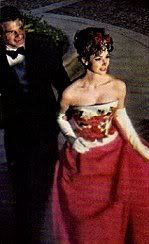

|
| _________________________________ | _________________________________ | __ | _____________________________ | _______ | traditional
nightspots
Early Atlantic City Nightclubs
New York City
- The Stork Club
- The Village Vanguard
- The Rainbow Room
- Birdland
- The Americana
Los Angeles
San Francisco
Miami Beach
- Fontainebleau Hotel:
----• La Ronde Room
----• Boom Boom Room
| Chicago
other cities
many cities
| |


Click here to see more
swinging nightspots! |
_________________________________________________
|
|
|
RetroLisa
| ___________________________________________________________________ | __ | _____________________________ | _______ | Modern Nightlife
rock clubs & discotheques
In the 1960s, the nightclubs of the past evolved into youth-oriented music clubs and discotheques. The traditional nightclub atmosphere was replaced by rock music, frenzied dancing, live bands and DJs playing records.
In the late 1960s, the role of the DJ became more prominent. From his spot near the dance floor, he crafted a mood-altering mix of tunes that made him a celebrity in his own right. The multi-media experience was also born at the discotheque, where elaborate sound systems and psychedelic light shows enhanced the surreal atmosphere.
Because drinking was not the main activity at these clubs, some of them admitted teens.
Hollywood's Whisky A Go-Go was the first discotheque to put dancing go-go girls in cages. They were originally known as dance demonstrators.

Greenwich Village
In the Greenwich Village section of New York, coffee houses hosted poetry readings and folk singers. The performers referred to these clubs as basket houses, because collecting donations in a basket was usually the only way they made any money. At Gerde's Folk City, Monday night was hootenanny night, when anyone could perform.
Greenwich Village Walking Tour
Greenwich Village History
|
|
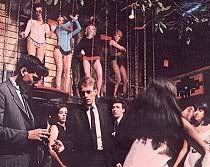
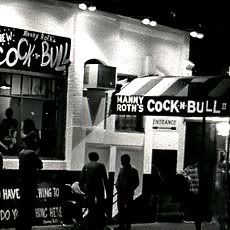
|
| _________________________________ | _________________________________ | __ | _____________________________ | _______ | 
the hot spots
Los Angeles
San Francisco
| New York City
Liverpool
London
|
| 
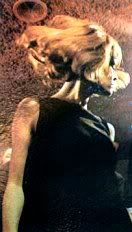

Click here to see more
swinging nightspots! |
_________________________________________________
|
|
|
